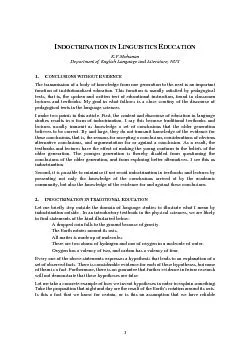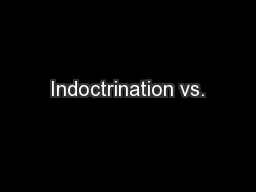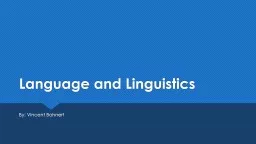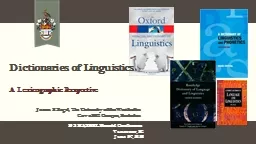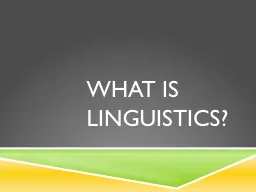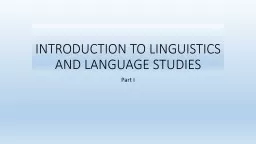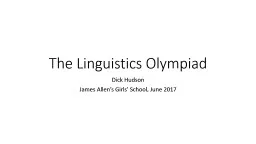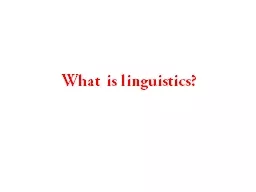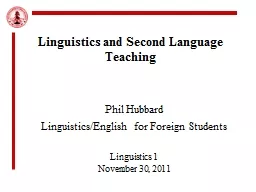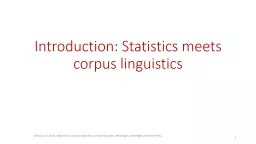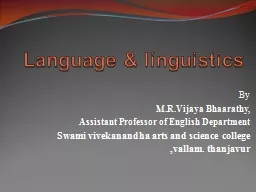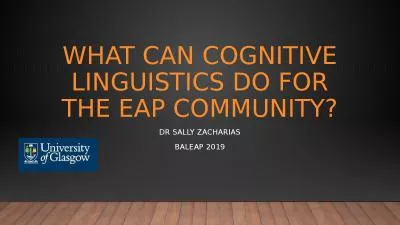PDF-INDOCTRINATION IN LINGUISTICS EDUCATION
Author : luanne-stotts | Published Date : 2015-08-14
KPMohanan Department of English Language and Literature NUS 1 CONCLUSIONS WITHOU A dropped coin falls to the ground because of gravity The Earth rotates around its
Presentation Embed Code
Download Presentation
Download Presentation The PPT/PDF document "INDOCTRINATION IN LINGUISTICS EDUCATION" is the property of its rightful owner. Permission is granted to download and print the materials on this website for personal, non-commercial use only, and to display it on your personal computer provided you do not modify the materials and that you retain all copyright notices contained in the materials. By downloading content from our website, you accept the terms of this agreement.
INDOCTRINATION IN LINGUISTICS EDUCATION: Transcript
Download Rules Of Document
"INDOCTRINATION IN LINGUISTICS EDUCATION"The content belongs to its owner. You may download and print it for personal use, without modification, and keep all copyright notices. By downloading, you agree to these terms.
Related Documents

